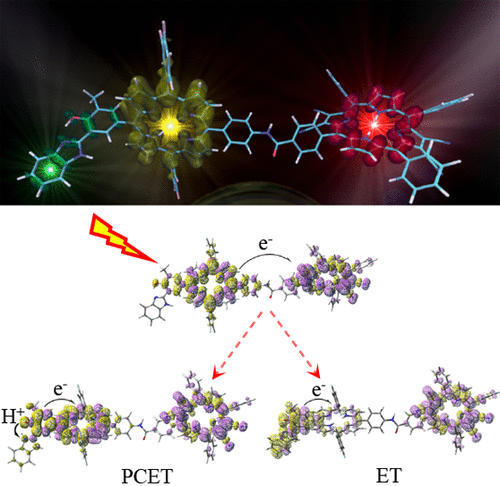In silico investigation of the aggregation-caused quenching: the "tolane-based molecule" c
DOI: 10.1002/cptc.201900117
ChemPhotoChem
A tolane‐based molecule, the 4‐fluorophenyl 4‐((4‐(octyloxy)phenyl)ethynyl)‐benzoate (FOEB), was recently reported to show Crystallisation‐Induced Emission (CIE) and Aggregation‐Caused Quenching (ACQ) [Tong et al., J. Phys. Chem. C, 2015, 119, 21875]. In this work, we rely on a combination of tailored computational methods based on molecular dynamics, (TD‐)DFT and QM/QM’ calculations, to investigate the structural and optical properties of FOEB in solution, crystal and aggregate. First, the computation of the Huang‐Rhys factors and the reorganization energies can rationalize the modulation of the emission efficiency observed when changing the solvent polarity. The moderate fluorescence quenching observed in solution is due to the photophysical energy dissipation caused by low‐frequency vibrational modes involving the lateral groups along with motions out of the plane of the molecule. In crystalline environment, due to the packing arrangment, there is a restrictriction of intramolecular vibration (RIV) mechanism which should open the radiative decay channels. On the opposite, within the aggregate, the observed ACQ arises from two different phenomena, the energy dissipation during the internal conversion process through the low‐frequency vibration mode identified in solution and a moderate energy loss through excitonic couplings.





